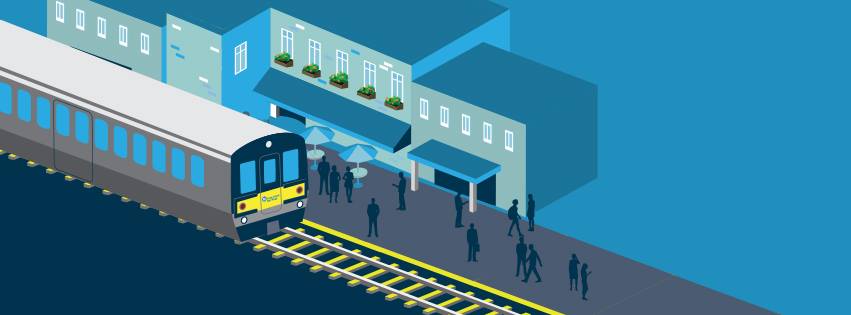Unconventional Wisdom from John Kominicki: Gov. Cuomo’s Third Track Express is Wisely Asking Folks to get on Board
One of Samuel Goldwyn’s best lines: “It’s absolutely impossible, but it has possibilities.”
The same might be said for the proposed third track of the Long Island Rail Road.
First suggested more than a decade ago, the extra rails would clear a bottleneck between Hicksville and Floral Park, where five LIRR branches carrying more than 100,000 daily riders converge on the mainline. The added tracks would ease congestion, eliminate frequent delays and get more commuters out of their cars, reducing our carbon footprint.
All very nice, but there’s more. The extra rails would also significantly improve west-east transit, allowing New York City workers to reverse-commute to Long Island jobs that are currently going unfilled, stalling the regional economy and forcing a spate of recent corporate defections.
Given brain drain, birth dearth and other workforce challenges, it is not puffery to suggest that Long Island’s future economic prosperity is inextricably tied to those added tracks.
Alas, those Long Islanders living along the affected 9.8 miles didn’t much like the proposal, citing the added noise and rumble and the fact that hundreds of homes and businesses would be gobbled up to make room for the new tracks. There was also the unanswered question of street crossings, at which local motorists already idle for interminable minutes as LIRR trains amble by, horns a-blaring and with barricade bells ringing and lights flashing.
True numbers: Trains using the existing two tracks blast their horns 3,000 times per day along the corridor in question and stop traffic for 24 minutes of every rush hour, causing major traffic snarls on the cross roads.
So, no. Adding a third track would be just too much, according to the 12,000 or so residents who signed petitions opposing the project. Their state representatives agreed, and the MTA’s possibly great but impossibly presented third track project was shelved.
It is back, new and improved, as the centerpiece of Gov. Andrew Cuomo’s broad infrastructure plan for Long Island.
Since unveiling it in January, the governor has scheduled public meetings, launched a website and released a “scoping document” that explains the project and why it’s so crucial for Long Island’s future. And Cuomo is promising the development process will this time “set the standard for community outreach.”
The governor’s team has already tackled some of the biggest issues associated with the project, including the condemnation of local land. No homes will need to be razed to accommodate the extra track, Cuomo says, and just 10 commercial properties will be affected, with the state offering generous buy-outs or relocation.
As for the big question about street crossings, the governor is proposing the construction of five underpasses, including one wide enough to accommodate five lanes of traffic, all to be built in under nine months. Two current crossings would be closed and speedily replaced with pedestrian bridges.
Those are just suggestions, mind you, and would be preceded by at least four public hearings and studies on the project’s social, economic and environmental impacts, even its risk to wildlife and historic and archeological resources.
“We’ll work in concert with each community,” the governor announced. “Just tell us how you want to do it.”
Whether Cuomo can turn those 12,000 detractors into supporters remains to be seen, but he’s clearly bringing the same zeal he applied to the Tappan Zee Bridge project, which will be completed in a record five years. Welcoming local input on the third track is a giant step in the right direction; another is that citizen groups opposing the initiative have agreed to join the conversation.
Goldwyn had it right. The impossible is indeed full of possibilities.
